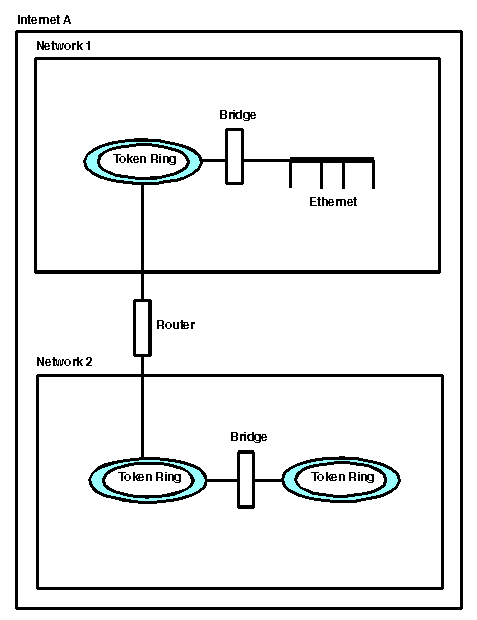Overview of internetworking
- Maximum transmission unit (MTU)
- Fiber Distributed Data Interface (FDDI)
- Token-Ring IEEE 802.5
- IEEE 802.3
- Ethernet — DIX V2
- Subnetwork Access Protocol (SNAP)
- IP routing
- Internet Protocol Version 4 (IPv4) and Internet Protocol Version 6 (IPv6)
- Direct routing
- Indirect routing
- Simplified IP datagram routing algorithm
- IPv4 subnetting
- IPv6 prefixes
- Simplified IP datagram routing algorithm with subnets
- Static routing
- Dynamic routing
Networking with TCP/IP connects different networks so that they form one logical interconnected network. This large overall network is called an internetwork, or more commonly, an intranet or internet. Each network uses its own physical layer, and the different networks are connected to each other by means of machines that are called gateways.
Gateways transfer IP datagrams between networks. This function is called routing; therefore, the internet gateways are often called routers. Within this appendix, the terms router and gateway are synonymous; both refer to a machine that transfers IP datagrams between different networks.
If IP datagrams are not passed properly over a bridge, none of the higher TCP/IP protocols or applications work correctly. For a discussion of bridges, see TCP/IP Tutorial and Technical Overview.
Linking networks in this way takes place at the network level of the International Organization for Standardization (ISO). It is possible to link networks at a lower-level layer using bridges. Bridges link networks at the ISO data link layer. Bridges pass packets or frames between different physical networks regardless of the protocols contained within them. An example of a bridge is the IBM® 8209, which can interconnect an Ethernet network and a token-ring network.
A bridge does not connect TCP/IP networks together. It connects physical networks together that still forms the same TCP/IP network. (A bridge does not do IP routing.)
Figure 1 depicts a router and a bridge. The router connects Network 1 to Network 2 to form an intranet.
